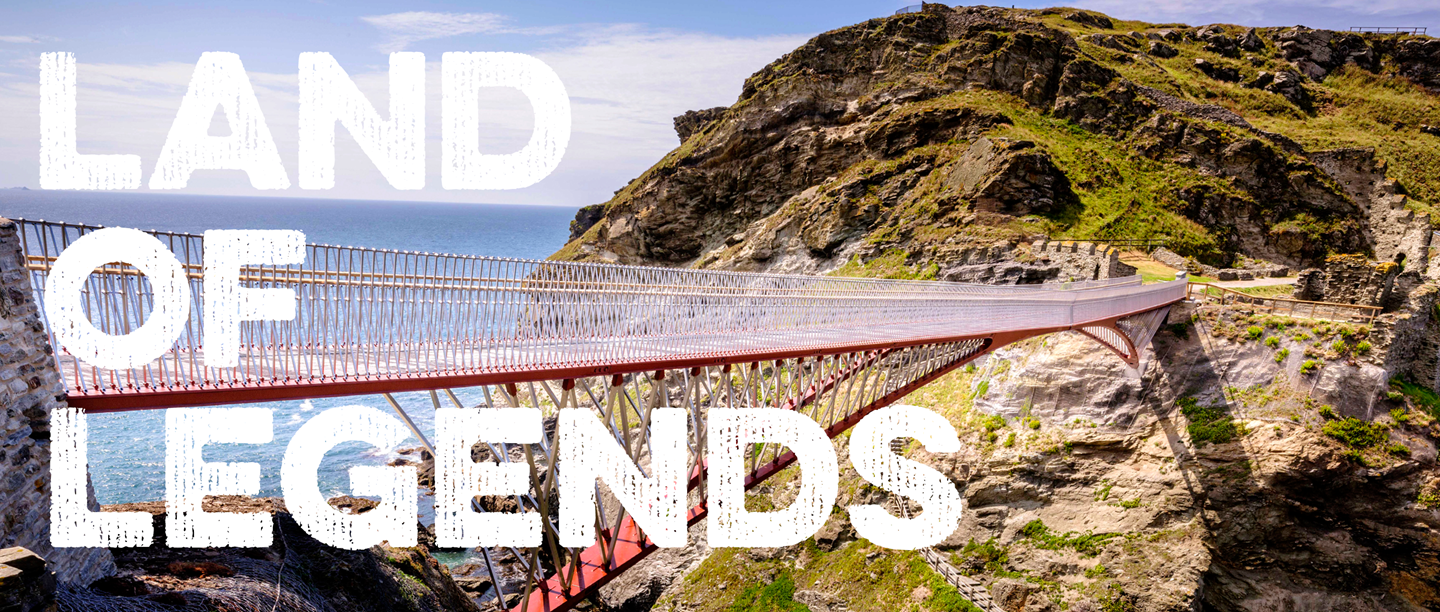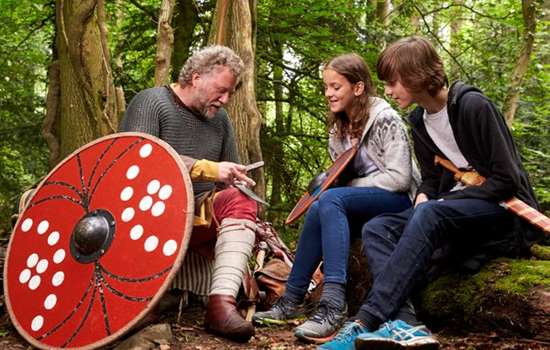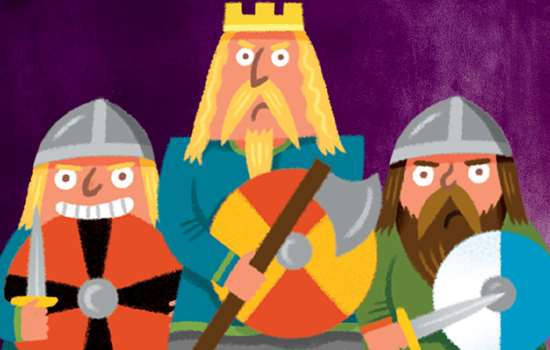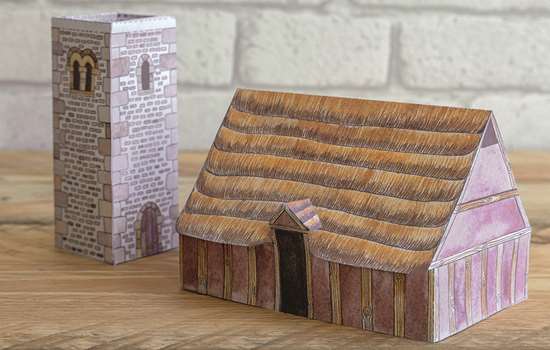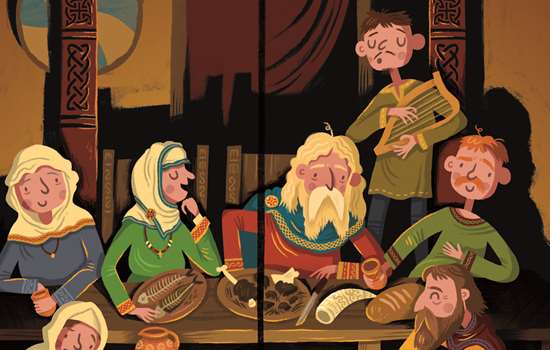Tintagel Castle in Cornwall is associated with the legend of King Arthur. But what was life really like in the past? Look beyond the myths, and find out what archaeological discoveries can tell us about life after the Romans left...
Lighting up the Dark Ages
Tintagel was a coastal trading town in the 5th to 7th centuries. At this time, Anglo-Saxon people were arriving in other parts of southern Britain, bringing their ideas, religion and language, but in south-west Britain, people probably continued to speak the same language (a Celtic language which later evolved into Cornish and Welsh). They also probably continued to practise the Christian faith introduced by the Romans. We don’t have many historical records from this time, and so sometimes it’s called the Dark Ages. But this isn’t a good name because archaeology has shown us this wasn’t a ‘dark’ age at all! People were writing in Latin, importing goods from the Mediterranean, and had interesting lives. We just have to dig a bit deeper to find out about them.
Digging deeper
The remains of the early medieval town at Tintagel have been mapped by looking carefully at the humps and bumps, or earthworks, of the buildings. In the summer of 1983, a fire burned the grass off of part of the site and revealed more of the building walls, and archaeology has helped to uncover some of the mysteries of life at Tintagel in the past. Here are some of the things we know about the site based on these discoveries.
-
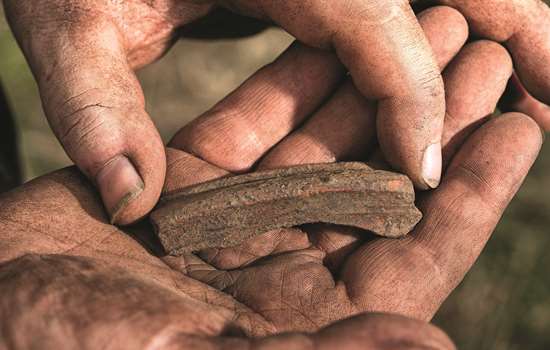
Fit for a king
In the 5th and 6th centuries, there was a large town at Tintagel. It could have been a place where the kings of south-west Britain sometimes stayed, because luxury objects including glass drinking cups and decorated plates have been found here. It was also easy to defend, with a very narrow piece of land joining the settlement to the mainland.
-
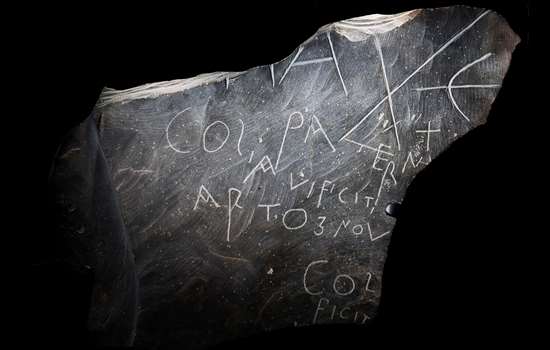
Artognou was here!
In 1998, archaeologists found a piece of slate at Tintagel with Latin writing on it (pictured). Some people called Artognou, Coliavus and Paternus had scratched their names on it, meaning this could be graffiti from the 6th century! The stone had been later used as a cover for a drain, but the inscriptions can still be seen. Can you spot the three names?
-
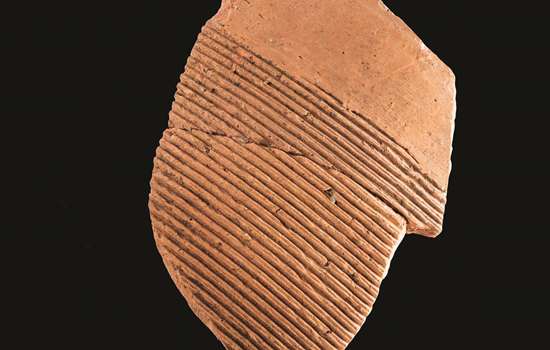
Exotic Tastes
People living at Tintagel were importing luxury items, including exotic foods, in exchange for local Cornish goods like tin, furs and maybe even slaves. We know this because hundreds of pieces of large storage jars called amphorae have been found. They were made in places around the Mediterranean Sea, and probably contained olive oil, wine and fish sauce.
Separating fact from fiction
For a long time, Tintagel Castle has been associated with the legend of King Arthur and his round table. No one knows whether the stories about him were based on a real man, or whether he was just a fictional character. There are only a couple of historical records that refer to an Arthur who was a battle leader in the 5th or 6th century.
In the 12th century, Geoffrey of Monmouth wrote a book called The History of the Kings of Britain. It contains the story of King Arthur, and later versions of it became very popular. However, because Geoffrey’s book was a mixture of facts and things he made up, it’s difficult to be certain about which parts of the story he invented. Geoffrey was probably inspired by the stories and ruins of the royal site at Tintagel to include it as King Arthur’s castle – starting this site’s association with the famous legend.
TINTAGEL CASTLE AND THE LEGEND OF KING ARTHUR
Find out more about the legend of King Arthur in this video from our History at Home Live! series. In this episode, Ben was joined by expert guest Jeremy Ashbee, to explore Tintagel Castle and its famous tale.

